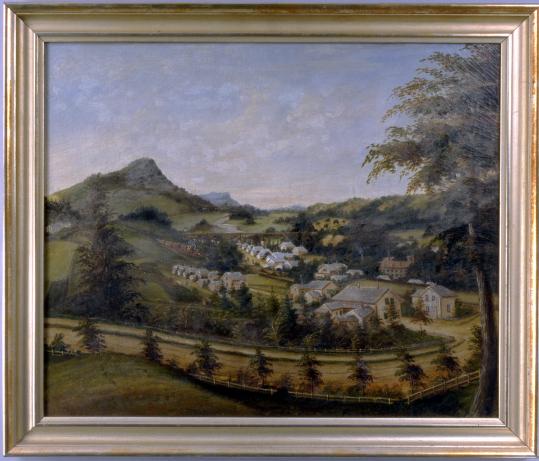|

(c) Pocumtuck Valley Memorial Association, Deerfield MA. All rights reserved.
Working : An Industrial Revolution
|
|
Farming remained the primary occupation and lifestyle for most Americans well into the 1800s. It was during this period, however, what has become known as the Industrial Revolution changed forever the lives of most Americans. Its technological and economic effects were far-reaching, enabling ordinary people to purchase factory-made textiles and other mass-produced goods they could not obtain before.
Among the most far-reaching effects of the Industrial Revolution was the social and economic newcomer it produced: the factory worker. The work patterns of these newcomers differed in important ways from other residents. These men and women were not farmers, nor were they tradesmen or artisans. They often lived in factory housing. A clock and a factory bell, not agricultural rhythms, structured their days.
Factories were not initially located in cities, although cities often grew up around manufacturing concerns. Owners tended instead to locate factories in rural hinterlands outside commercial centers. Rivers and other waterways provided industrial waterpower and transportation routes. This painting by a German artist of an early industrial community in Deerfield, Massachusetts, illustrates how these factories and their employees transformed the rural landscape. The Russell Cutlery factory opened in 1836 on the Green River. The owners recruited German metalworkers and settled them in factory housing in a commercial district of Deerfield, Massachusetts, known as Cheapside. The train in the background reminds viewers of the close relationship between industry, immigration, and the railroad in this period. Cheapside was a thriving river port during the eighteenth and early nineteenth centuries. By the time this picture was painted, railroad traffic had replaced the busy wharves and docks that once lined the river. The painting provides an unusual glimpse of everyday life in the nineteenth century among the German, Irish and Italian immigrant community that developed first around the factory in 1836 and then at the laying of the railroad ten years later.
top of page
|
View of Cheapside
| artist Unidentified |
| location Greenfield, Massachusetts |
| height 25.0" |
| width 30.0" |
| process/materials oil on canvas |
| item type Art/Painting |
| accession # #1958.02 |
|





